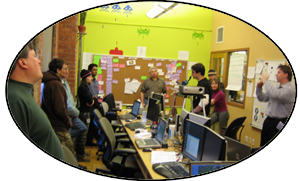
Steven Doc List and I held a 20 minute presentation and 60 minute open space on software ethics.
I think the format works. Software ethics is not rules or reason, it is navigating essential complexity in building software and in moral choice. Descriptions that “abstract away its complexity often abstract away its essence” (Fred Brooks)
We embrace essential complexity using the values and practices of agile software development.
We can become better software developers using the same tools we use to build better software.
We can learn through practice to recognize and accept responsibility for the intended benefit and unintended harm we create.
We can retrospect on our actions and their consequences, engage in a conversation with our peers, learn from, challenge, and support each other.




